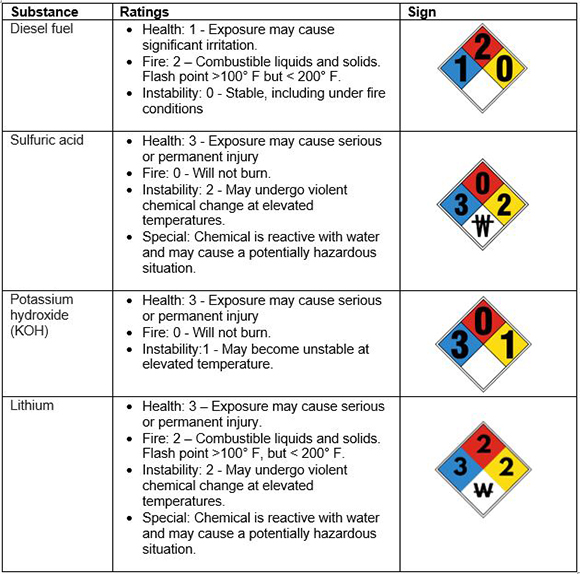Ensuring First Responder Safety with NFPA 704 Signage in Battery RoomsProtecting emergency personnel during hazardous material incidents is vital. That's why the National Fire Protection Association (NFPA) developed a standardized signage system for battery rooms and other areas, facilitating clear and immediate communication of potential dangers. NFPA 704 Standard defines the dimensions, colors, and numbers used on these signs. This universally recognized system empowers first responders to identify hazardous materials within a building or energy storage room, enabling informed and safe response strategies. This article specifically explores the application of NFPA 704 signage for battery rooms. Understanding Ratings:
The distinctive diamond-shaped sign (see Figure 1) categorizes material hazards into three key areas:
Additional Considerations

Table 1 - Hazard severity Numbers
By implementing NFPA 704 signage in battery rooms, organizations can:
Investing in clear communication through NFPA 704 signage is a crucial step in prioritizing first responder safety and minimizing risks associated with hazardous materials. Special Hazards (white)
Pinpointing NFPA 704 Ratings:The most reliable source for a material's NFPA 704 ratings is the Safety Data Sheet (SDS). Obtained directly from your material supplier, the SDS provides comprehensive safety information, including its assigned NFPA ratings. 
Table 2 – NFPA Signage for Common Battery Room Substances
|


5534 Olive St.
Montclair, CA 91763-1649
1.909.946.4610 or Toll Free at 1.800.206.9884
Protecting Mission-Critical Facilities and Personnel since 1993
Certified Manufacturer of UL Listed & UL Recognized Products



